Scott #112 is part of the 1869 Pictorial Issue, the first U.S. stamp series to depart from the long-established tradition of exclusively portraying national leaders and symbolic emblems.
This series included both historical figures and scenes, with the 1-cent denomination depicting Benjamin Franklin, the first Postmaster General of the United States. The issue was printed in 1869 and was intended for widespread circulation in basic postal use. Franklin’s presence on the stamp aligned with his role in establishing the American postal system, ensuring his continued representation on U.S. postage.
The 1869 series introduced several notable innovations, including the use of bicolor printing on some denominations, experimentation with grills for security, and the adoption of designs outside the standard portrait style. The 1-cent Franklin, however, retained the portrait format, anchoring the series in tradition while other denominations branched into new themes.
Design & Print
Scott #112 was produced by the National Bank Note Company under contract with the Post Office Department. Issued in 1869, the stamp was printed in buff on hard wove paper and bore the experimental “G” grill, a security measure intended to prevent the reuse of stamps by breaking the paper fibers to absorb cancellation ink.
The design features a finely engraved portrait of Benjamin Franklin, facing left, enclosed within an oval frame with ornamental detailing. The denomination is inscribed clearly at the bottom. The perforation gauge is 12, consistent with other issues of the series.
Estimates suggest that tens of millions of the 1-cent Franklin were produced, as the denomination served a core role in the postal system. Franklin’s selection reflects the enduring emphasis on his historical contributions, while the design itself fit into the overall attempt of the 1869 issue to modernize U.S. postage with more varied artwork.
Postal Usage
The 1-cent denomination in 1869 served multiple postal purposes under the prevailing rate structure. It was used primarily as an auxiliary value, often combined with other denominations to meet higher postal rates. For example, it was commonly affixed to local or drop letters, circulars, printed matter, and for making up exact rates when paired with 2-cent or 3-cent issues.
At the time, the domestic first-class letter rate was 3 cents for up to a half ounce, meaning the 1-cent Franklin often played a supplementary role. Its heavy production volume corresponds to these practical functions, as small-value stamps were essential for flexible postal transactions. The stamp’s use reflects the ongoing adjustments to postal rates during the late 1860s, when Congress and the Post Office sought to balance affordability with the growing costs of an expanding mail system.
Identification
Scott #112 is identified by its buff color, Franklin portrait facing left, and its perforation 12 format. The “G” grill is a critical diagnostic feature, consisting of small square pyramids pressed into the paper, measuring 12 to 13 by 11 to 13 points. This grill is larger than the earlier “F” grill but smaller than the later “H” grill, making its size and spacing a key identifier.
The stamp is printed on hard wove paper, distinguishable under close inspection from soft papers introduced later in the 19th century. When compared with other Franklin issues of the period, Scott #112 stands out for its combination of buff color, G grill, and placement within the experimental 1869 series.





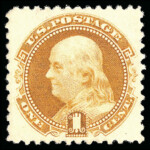
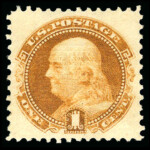
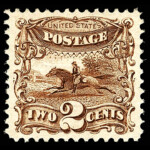
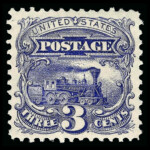
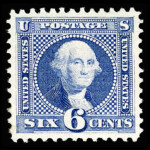
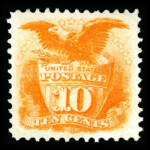

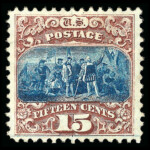
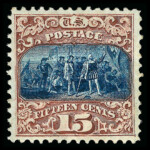

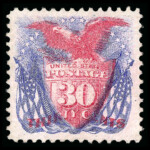













Ask A Question Or Leave A Comment